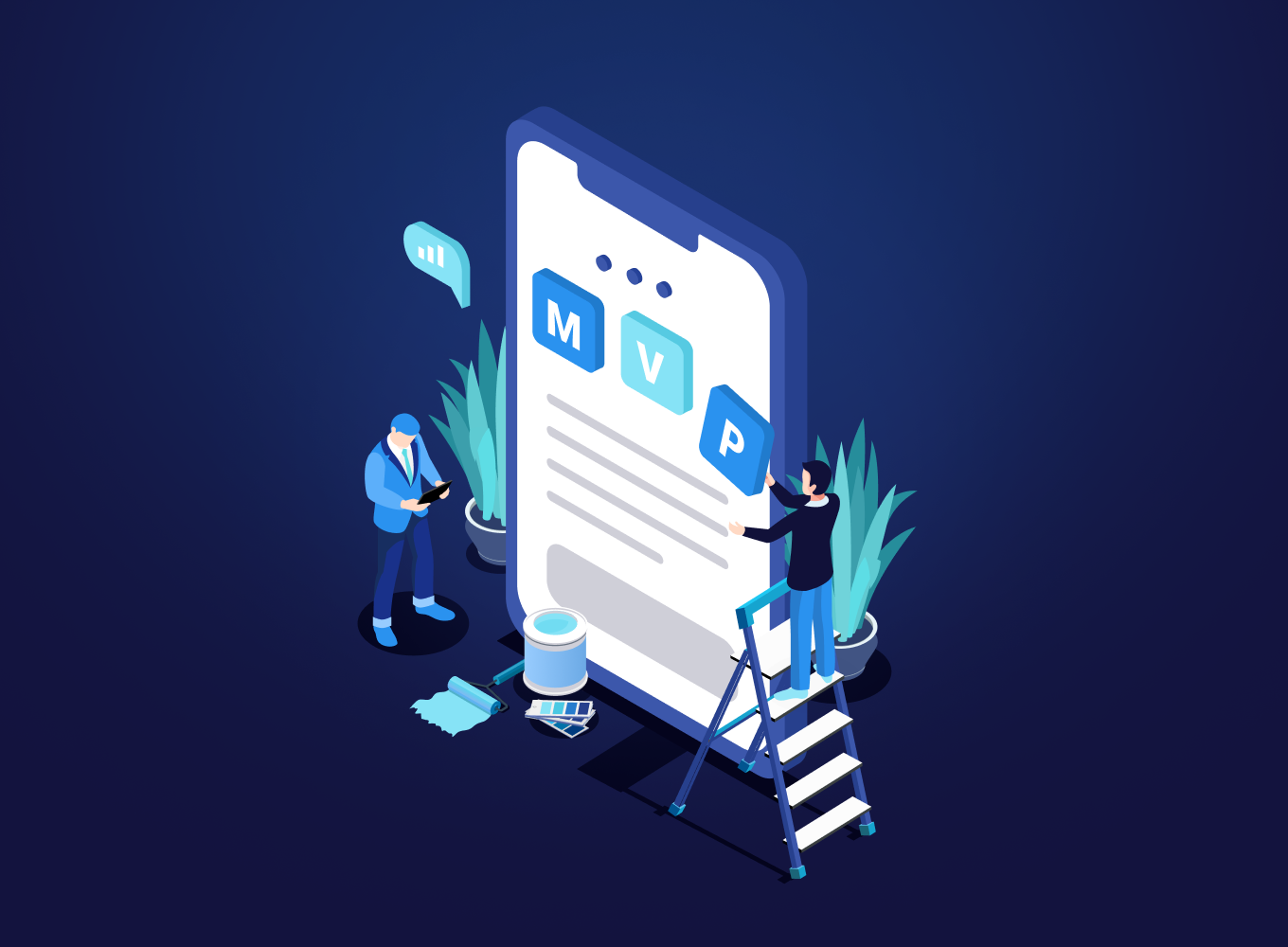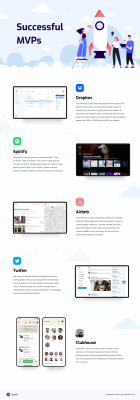A minimum viable product (MVP) is a development technique from the Lean Startup methodology that involves creating a new product or website with just enough features to satisfy early users. Only after incorporating feedback from the product’s initial users is the final, comprehensive set of features planned and developed.
For those who want to decrease start-up financial risks, attract early adopters, and test an idea with real users, launching a Minimum Viable Product is an excellent idea. In general, the MVP concept is to test the start-up hypothesis and its usefulness to the intended audience.
The MVP is critical in agile development since the agile process is centred on verifying and iterating products based on user feedback.
This article will show you how to create an MVP and evaluate its success.
Building an MVP
Eric Ries, Co-founder of IMVU and author of “Start-up Lessons Learned” said; “As you consider building your own minimum viable product, let this simple rule suffice to remove any feature, process, or effort that does not contribute directly to the learning you seek.”
There are no differences between app MVP development and other mobile app development services. So, given that you’ve already completed the market research, feature selection, and user flow planning stages, we’d just like to remind you of the important steps of the process and provide a brief explanation for each of them.
One of the most crucial first-stage decisions you’ll have to make is whether to focus on iOS or Android. There is a lot to consider when making this decision, and it will differ depending on your product, target demographic, and test site. This article delves deeper into the topic.
Determining Technology Stack
The technological stack is the next stage in determining the cost. A technological stack is made up of software packages and programming languages that are used to create your MVP.
MVP stands for Minimum Viable Product, and it’s simply a means to collect quick feedback from people. You should keep in mind that you don’t want to overwhelm yourself with expensive technologies while choosing the proper technology for your MVP. That said, the quality of your technology stack should not be compromised.
Open outsource technology is one viable and efficient solution. Open outsource technology is software that has the source code available for anybody to examine and improve. Open outsource tools will also reduce time to market, particularly for back-end technologies.
When you’re at the MPV stage, there’s a good possibility you’ll have to rewrite parts of your technological stack as you scale. A well-designed stack, on the other hand, will make the task more achievable.
Here are some considerations to make while selecting the correct tech stack for the MVP:
- Databases are used to establish how information is stored, connected, and represented. The two main types of databases used in the bulk of software projects are SQL and NoSQL. Most MVPs choose the first option over NoSQL.
- Physical devices and digital services are combined in server infrastructure and “the cloud.” The term “cloud” refers to hosting your services on a third-party infrastructure for a price. As a result, without ever having to deal with any physical infrastructure.
- The programming on the back end. This is essentially how many apps communicate with and connect to the server.
- Your MVP’s front-end services, which are essentially the user interface and product design.
- Application Programming Interface (API) is a computer interface that allows different programming languages to communicate with each other.
Finding and prioritising features
To begin developing an MVP app, you must first determine what your future MVP would look like. The value of any MVP is determined by the purpose it serves and whether it is truly needed by your target market.
A minimal number of features for launch can help you cut down on the hours spent by your development team.
Switch to prioritising sufficient features when you’ve determined which ones you require. Put the features that are directly related to the start-up’s aim at the top. Other features will be saved for later releases, piquing your customers’ interest. This can be done using a Prioritization Matrix.
Additionally, by completing a competitor analysis, you will have a better idea of which features to include and which ones to leave out. This will help set your MVP’s competitive advantage.
MVP Development Process: Build, Learn and Build Again
MVPs are designed to test a start-up’s concept while investing as little money as feasible. You’ll need to gather feedback to complete this task. It largely impacts how your project will progress.
Measuring and learning are the most crucial and critical stages in developing an MVP app. Make sure it provides a feedback loop to guide future development.
Prepare to review every part of the MVP after it has been launched. Consider first marketing statistics from the marketing strategy in place, as well as direct customer feedback and information on how they interact with your product. Try to figure out which features your MVP lacked and which ones went unnoticed by users.
Some popular franchises, such as Farmville, fully leveraged the concept of MVP by implementing new gameplay features over time while progressively improving overall user experience.
Examples of Successful MVPs
Development Cost of an MPV
The cost of product development is determined by a variety of factors. Project complexity is one of the most important considerations.
The cost of MVP development is assessed on a time basis, thus the longer it takes to design your MVP, the more expensive it will be. Another option for MVP costs is to lock in a specific price. There are also ready-made tech stack solutions to consider. Although, when it comes to ensuring quality in your end output, choosing hybrid development might be the quickest and cheapest decision.
Minimum Viable Product grants
Minimum Viable Product (MVP) grants are intended to assist pre-revenue technology companies in engaging with a potential business client, or channel to market, gain market validation and make their first sale.
Conclusion
At first glance, it may seem that building an MVP of an app does not differ from developing a regular application, but this is not the case. When working with MVP, you have the freedom to modify the product to the real demands of potential users, even if you made some major errors during the planning phase.
It is designed to get a basic product to market with limited functionality in the quickest time possible. However, a common pitfall is releasing a plain solution that falls so far short of users’ expectations that it is no longer viable.
A Minimum Viable Product (MVP) is an important milestone in app development that can also serve as a start-up accelerator. Your MVP may even help you acquire some backup cost for the ultimate program development if done correctly with accurate cost calculations.
Appello offers the most intuitive solutions that anyone can use with ease. We are a software development company in Australia specialising in app development. We’re able to cut down your efforts in MVP development and make your first impressions count meeting any specific business requirements.Talk to us about both your MVP and long-term goals. Contact Appello today.
To view Appello’s App development process in detail, we created a diagram for your convenience.




